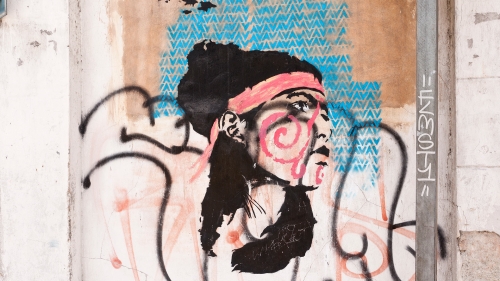
Sasha Kurlenkova (they/them) studies communication as an embodied, multimodal and materially situated phenomenon.
Since 2018, Sasha has been a PhD student at the Department of Media, Culture, and Communication where they've been developing a mixed-method research project on interactions of non-speaking children and young adults in Russia who use embodied, environmentally coupled, as well as technologically mediated, ways of meaning-making with their familiar orally-speaking partners at home.
Their dissertation presents a multimodal sequential analysis (Mondada 2018, 2019; Nevile 2015; Streeck, Goodwin & LeBaron 2011) of naturalistic interactions of Vlad, a 8-10 year-old non-speaking boy with cerebral palsy and Alisa, his orally speaking mother, video-recorded over 2 years in their home environment in Russia. This analysis reveals, on a micro-level, some roles that a high-tech device - an eyetracker - plays in a complex ecology of this family's daily communication and collaborative activities. Detailed multimodal transcription (Mondada 2018) and close examination of their video-recoded interactions demonstrate how eyetracker is not a magic bullet or a “fix-all” solution - the idea widely criticized by disability activists and assistive tech scholars (cf. Yergeau 2014; Jackson et al. 2022; Ellcessor 2016) - but rather just one resource used by the boy to address certain tasks. Sasha closely attends not only to technological means, but also embodied methods of meaning-making used by Vlad, such as eye-pointing gestures, head and torso movements, vocalizations and facial expressions, material objects and affordances of their home environment, as well as his mother's collaborative actions.
This research highlights both tech biases in the field of Augmentative and Alternative Communication (AAC), and language ideologies prevalent in Speech & Language Pathology (SLP), Education, Linguistics, and some Language and Social Interaction research that understands communication as speech. Because of the modality chauvinism (Hanner, Robinson 2023), i.e. prioritizing speech in research, literacy education and development of technologies, the multiple forms of non-speech languaging remain unstudied, unaccounted for in professional literature and practices and ranked low in comparison to speech-based communication (cf. DeThorne & Searsmith 2021; Ibrahim et al. 2023; Chen 2022). Sasha's approach aims to advance multimodality into clinical and educational practices that will consider people's deployment of various forms of meaning-making, including eye-pointing, gesturing, facial expressions, stimming, writing, drawing, emojis and others, on top of or instead of conventional spoken or signed languages.
